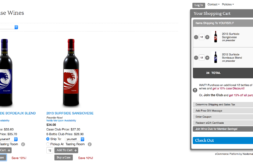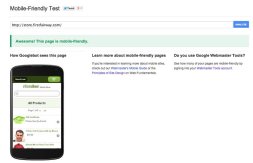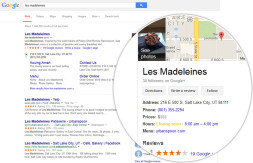7 Twitter Tactics for SMBs Looking to Attract Local Customers
One of the greatest features of the internet is that it allows small businesses to reach customers anywhere in the world—as if they were large corporations. However, in the rush to extend their reach to as many people in as many places as possible, many small and medium sized businesses neglect to focus on the people crucial to their business success: the people who live and work nearby.
Social media tools are ideal for both allowing you to extend your reach and target specific groups of people in your local area. A recent survey from Market Probe International suggests that an impressive 72% of Twitter followers report that they are likely to buy from a local business that they follow.
Given this fact, SMB owners miss an opportunity to increase their community visibility and interest new customers when they don’t target their local followers on Twitter.
Below we take a look at several of the easiest and most efficient strategies to help you capitalize on the power of Twitter in your local area. You’ll soon be able to figure out who to follow and how to get your message to them.

Annette Shaff / Shutterstock.com
1. Search for Tweets Containing Your City Name:
Fortunately, Twitter’s Advanced Search function makes it easy to search for Tweets that include your location. Simply input local search terms under the “Places” heading.
You will likely come back with a huge list of Tweets mentioning your city or town, so feel free to play around with search terms to narrow it down. For example, you might search for Tweets mentioning your city and a particular keyword relevant to your business. Once you have found a list of people, start following them and begin cultivating a relationship.
2. Search Twitter Profiles for Your City Name:
Another surefire way to find local people to follow is to search Twitter profiles that include your city as a location. Again, Twitter makes this fast and easy, so there is no reason not to do it. Simply use the Advanced Search function, as above, and search for your location. Narrow the list of results using the People tab and you will soon have a handy list of local Tweeters.
3. Use Followerwonk to Identify Top Local Tweeters:
Followerwonk is a handy tool that allows you to identify thought leaders in your area and industry. While sourcing Twitter users based on location is a great start, you certainly won’t want to follow ALL of the people that will turn up. Use Followerwonk to gain an understanding of who the people on your list are and to make calculated decisions about whether or not to follow them. Followerwonk is ideal for examining:
• Social authority scores
• Frequency and Recency of Tweets
• Total Tweets
• Most active hours
• Retweet Stats
Following someone who is more active on Twitter and has more followers is a good practice for small businesses wanting to get the most bang out of their Twitter buck.
4. Use Twellow to Identify People Based on Interests:
Another useful tool for finding relevant local Tweeters to follow is Twellow, which allows you to search Twitter profiles based on interests, professions, and expertise. Twellow mines user profiles and segments them into useful categories such as Recreation and Sports, Society and Culture, and Media. Again, while searching based on location is great, even greater is narrowing those location-based searches to users relevant to your business. In this way, you can target people who are most likely to be in social networks that are relevant to your business.
5. Piggyback on Local Newspaper and Radio Station Twitter Lists:
You have no doubt heard that old adage about not reinventing the wheel. The same can be said for Twitter follower lists. Looking to media organizations such as radio stations and newspapers is a quick and painless way to find Twitter users in your area.
Find and follow all the local media outlets that resonate with your brand. Use their Follower lists to find new people to follow. (Keep in mind that the larger and more popular the newspaper or radio station is, the more likely they are to have non-local followers. There is no guarantee that someone who follows the “New York Times” or the “Washington Post” lives locally, but someone who follows a smaller outlet probably does.)
Muckrack is a neat related tool that allows you to find journalists in your area to follow. Journalists often have a large Twitter and social media following and thus can be excellent ways to source new people to follow in your area.
6. Piggyback on other Local Business/Organization Lists:
Consider looking to other local businesses and organizations to grow your Twitter contacts. Followers of the local Chamber of Commerce or City Council are excellent places to start, as are followers of local non-profits. You are bound to find local people who are engaged and interested in being involved with their communities when you source people this way. Often, these are exactly the people you want to connect with — local, wired, and interested.
7. Follow Your Followers’ Followers:
In the same way that the enemy of your enemy is your friend, the Followers of your Followers should be your friends. As with all of these strategies, you cannot simply add everyone that follows your followers. That will lead to a messy and chaotic list that will have you engaged in a Twitter cleanup at a later date. Instead, pick people from this group who are local and who meet other relevant criteria. (Interests, organization affiliations, lots of Tweets, etc.) To quickly figure out who is already following you from your list of Followers’ Followers, DoesFollow will do the trick.
The Takeaway:
The Twittersphere is an essential place for small and medium business owners to spend time in nowadays. Those 140 character messages are remarkably streamlined and effective ways to reach new customers, stay relevant to current customers, and increase local visibility. While tackling Twitter may at first seem overwhelming, business owners should take a breath, consult a small business guide devoted to Twitter, and dive right in. You’ll be amazed at how quickly and painlessly you will be able to source relevant people in your local area and develop a robust Twitter presence.














